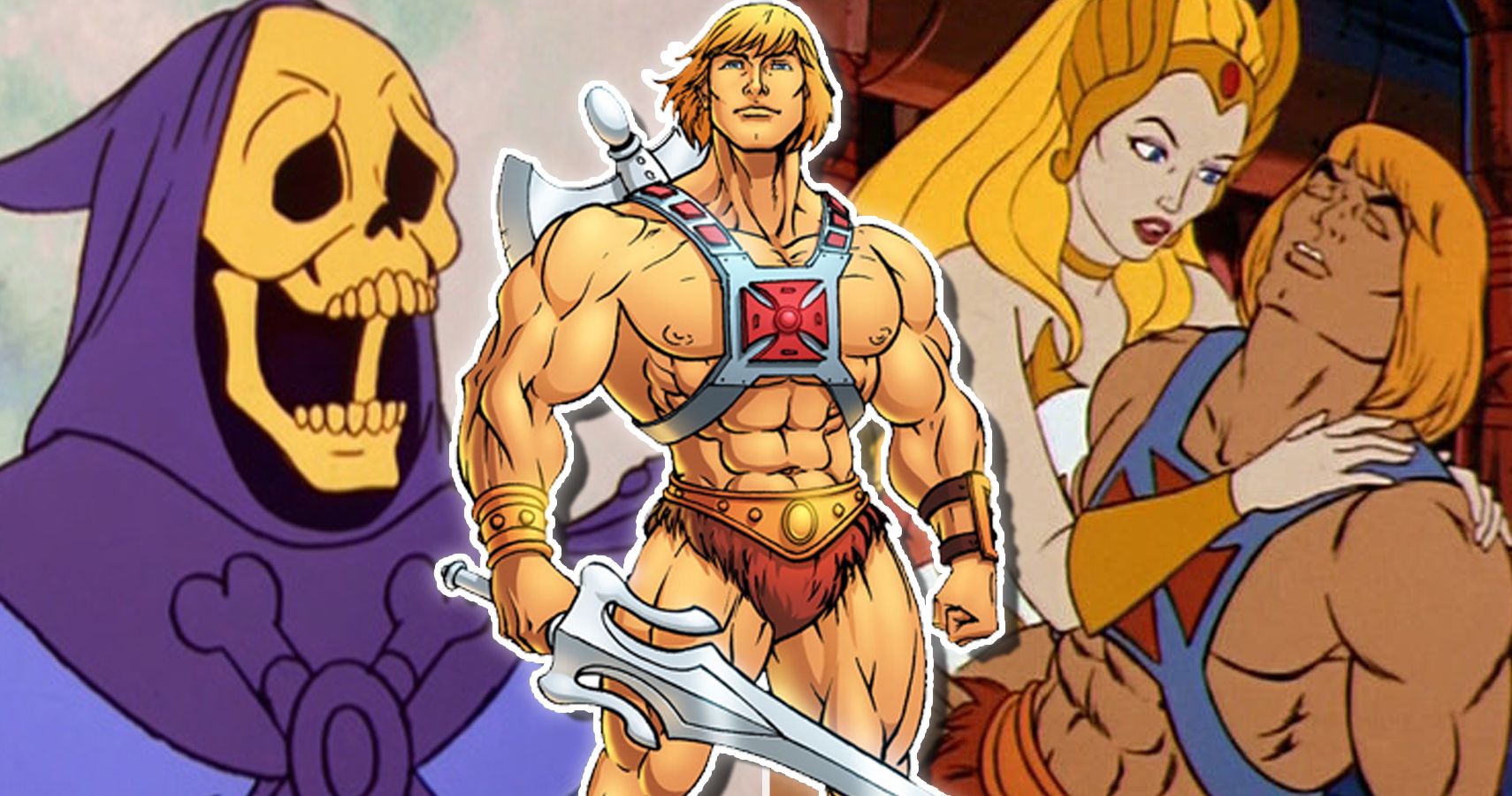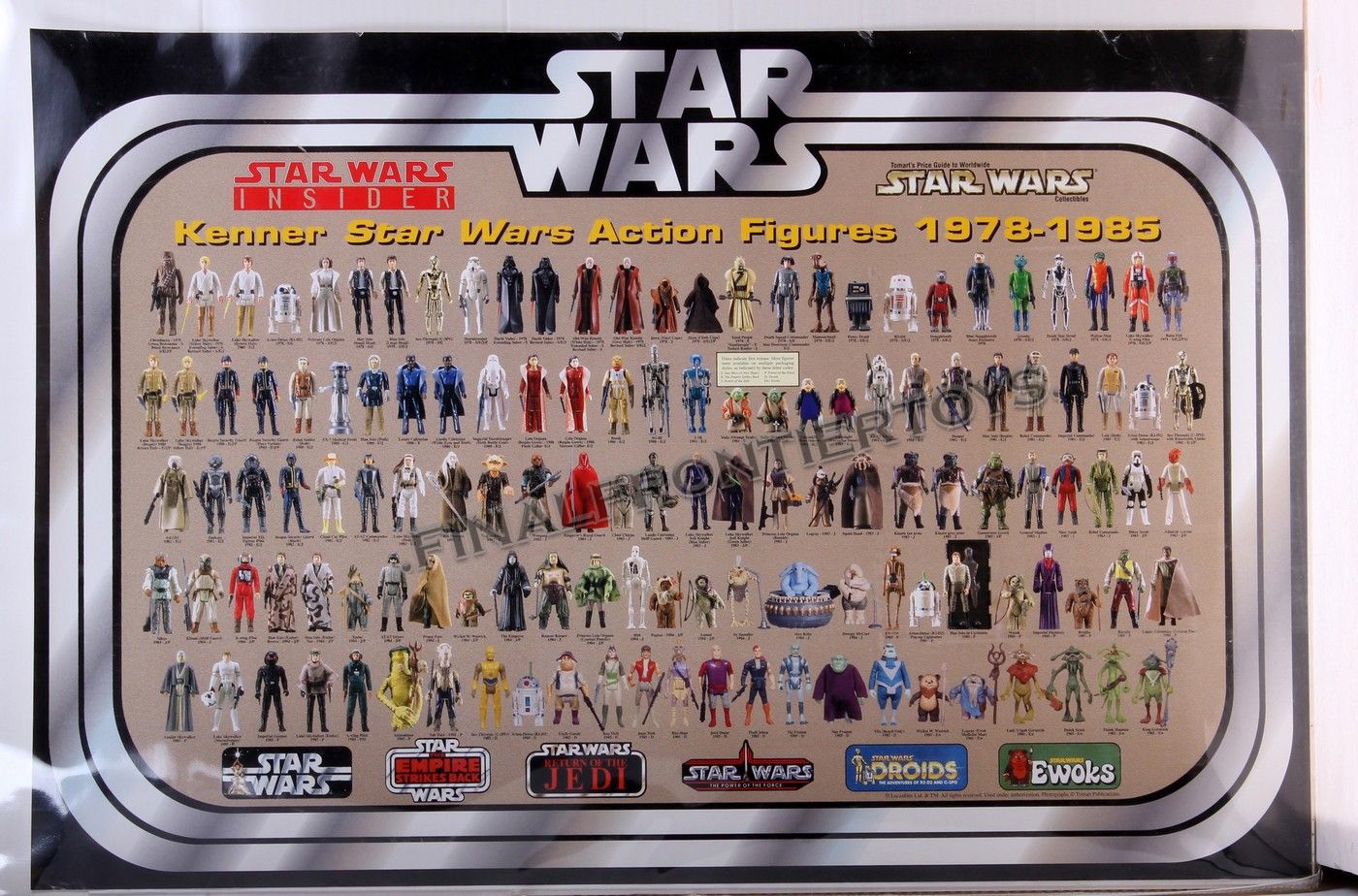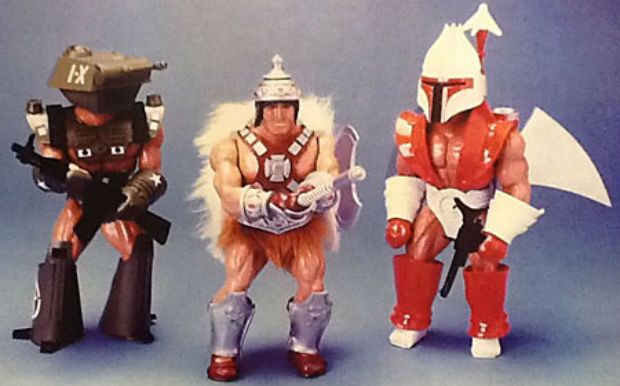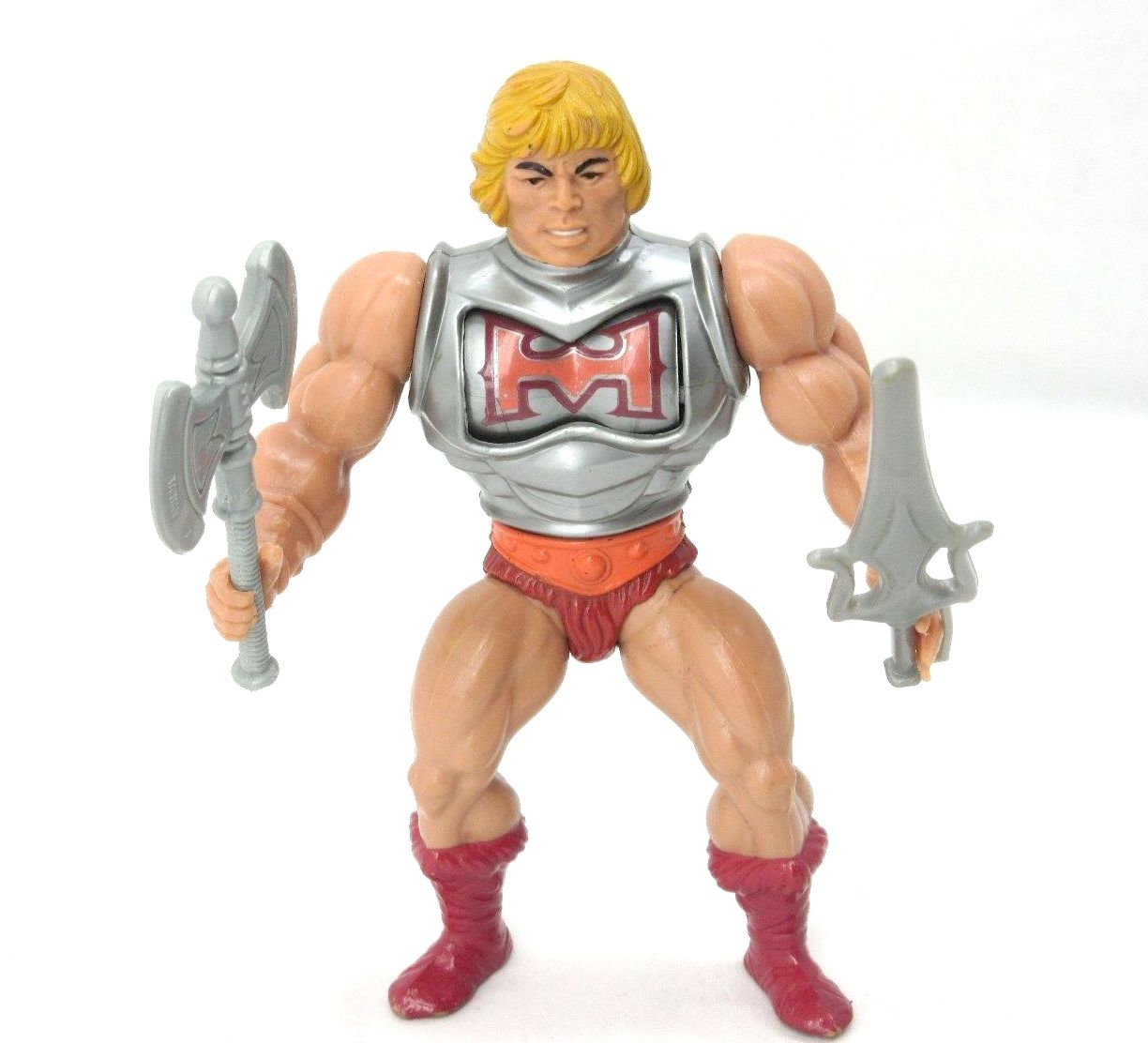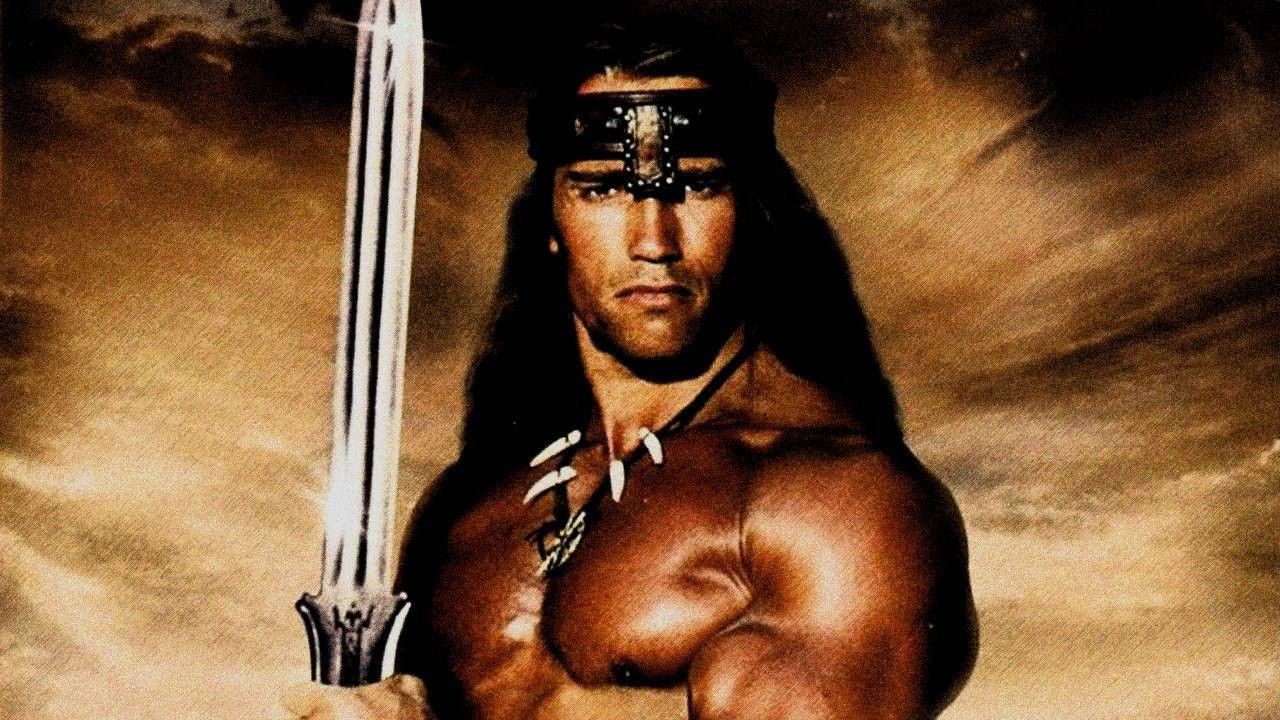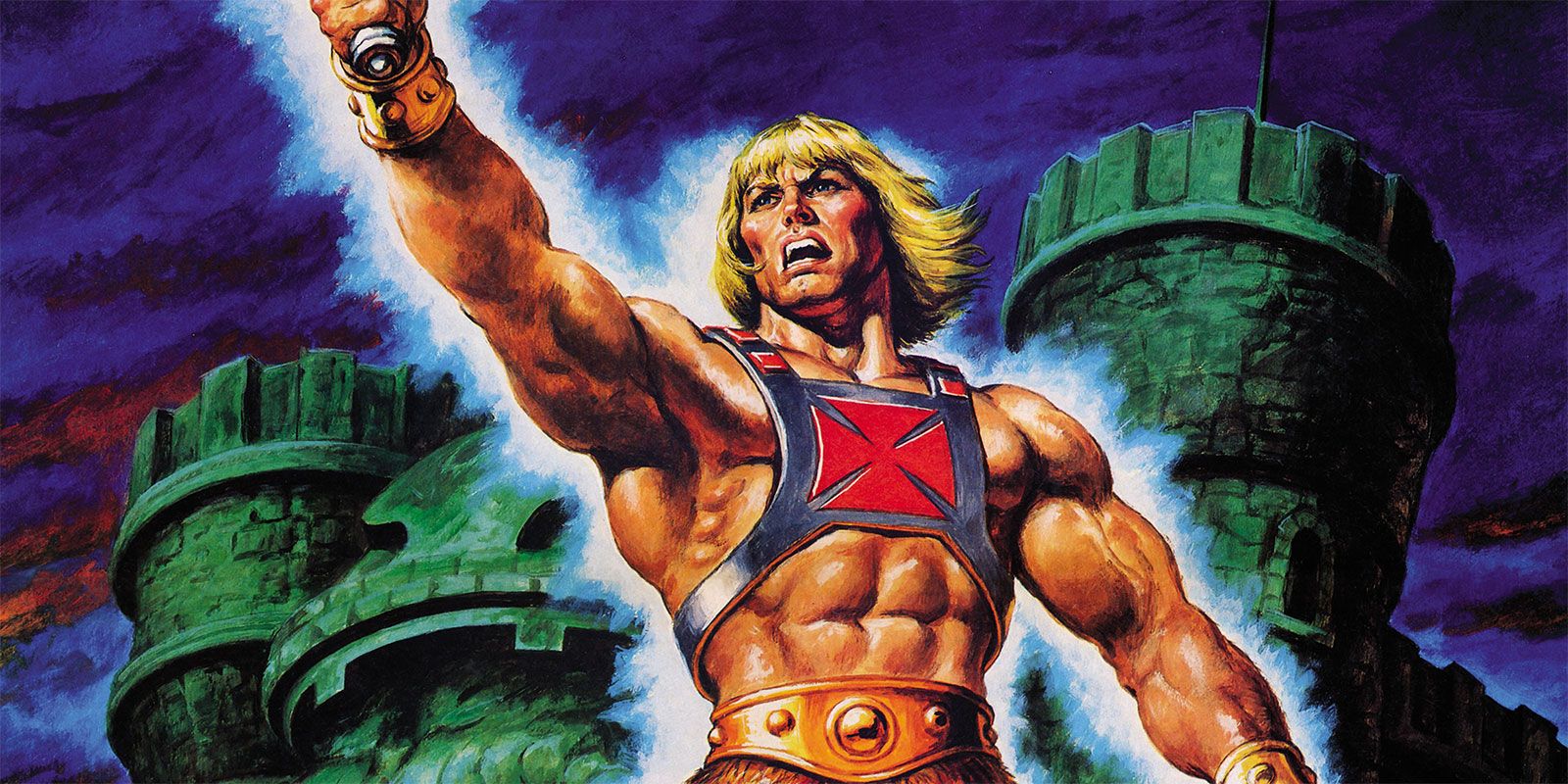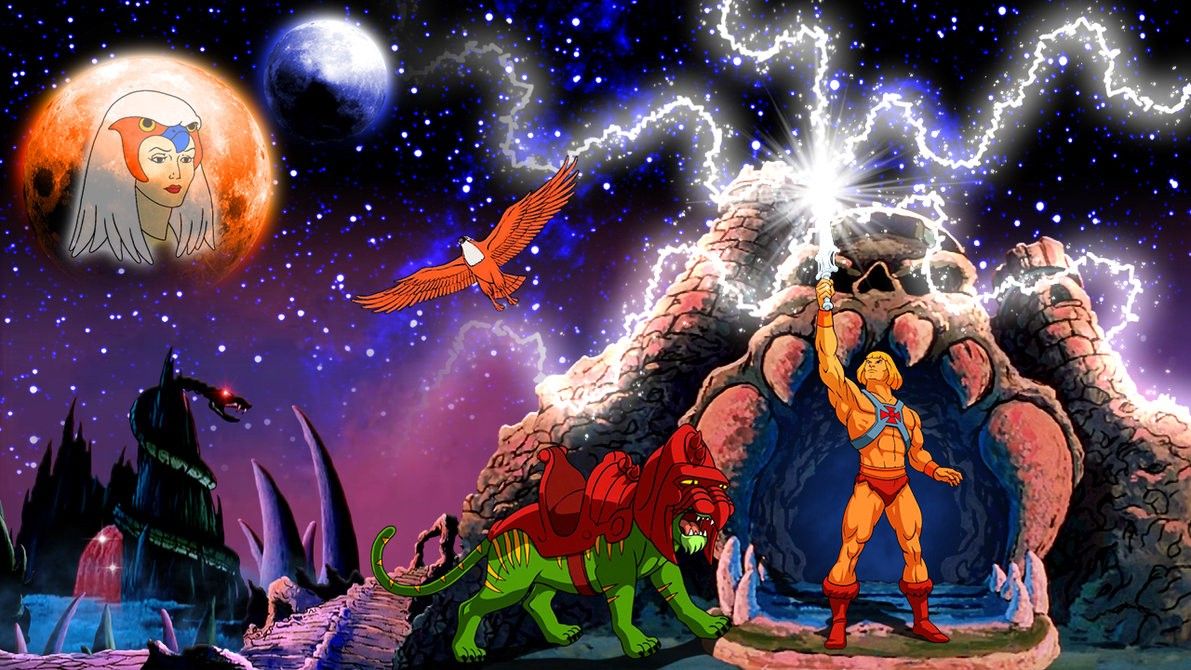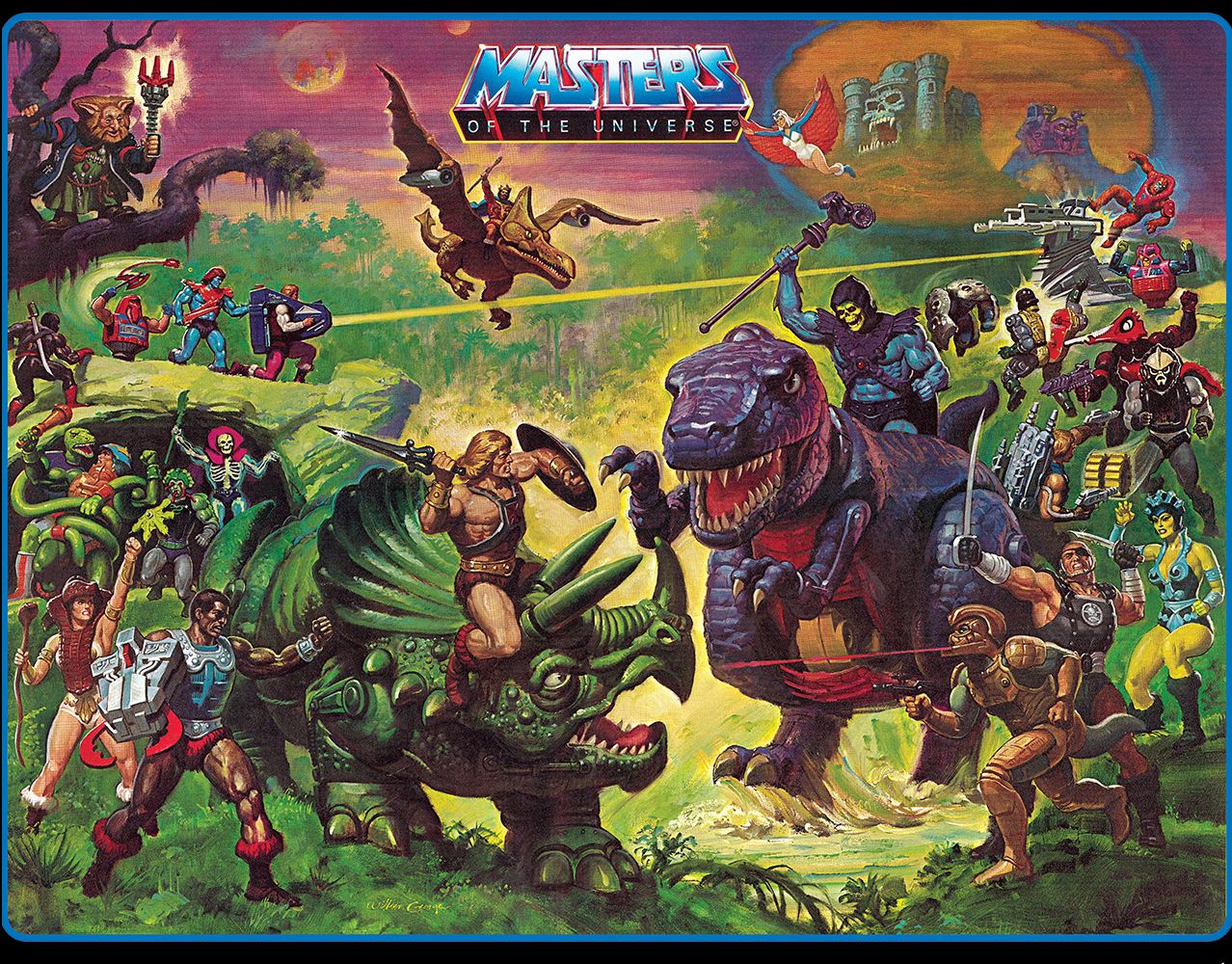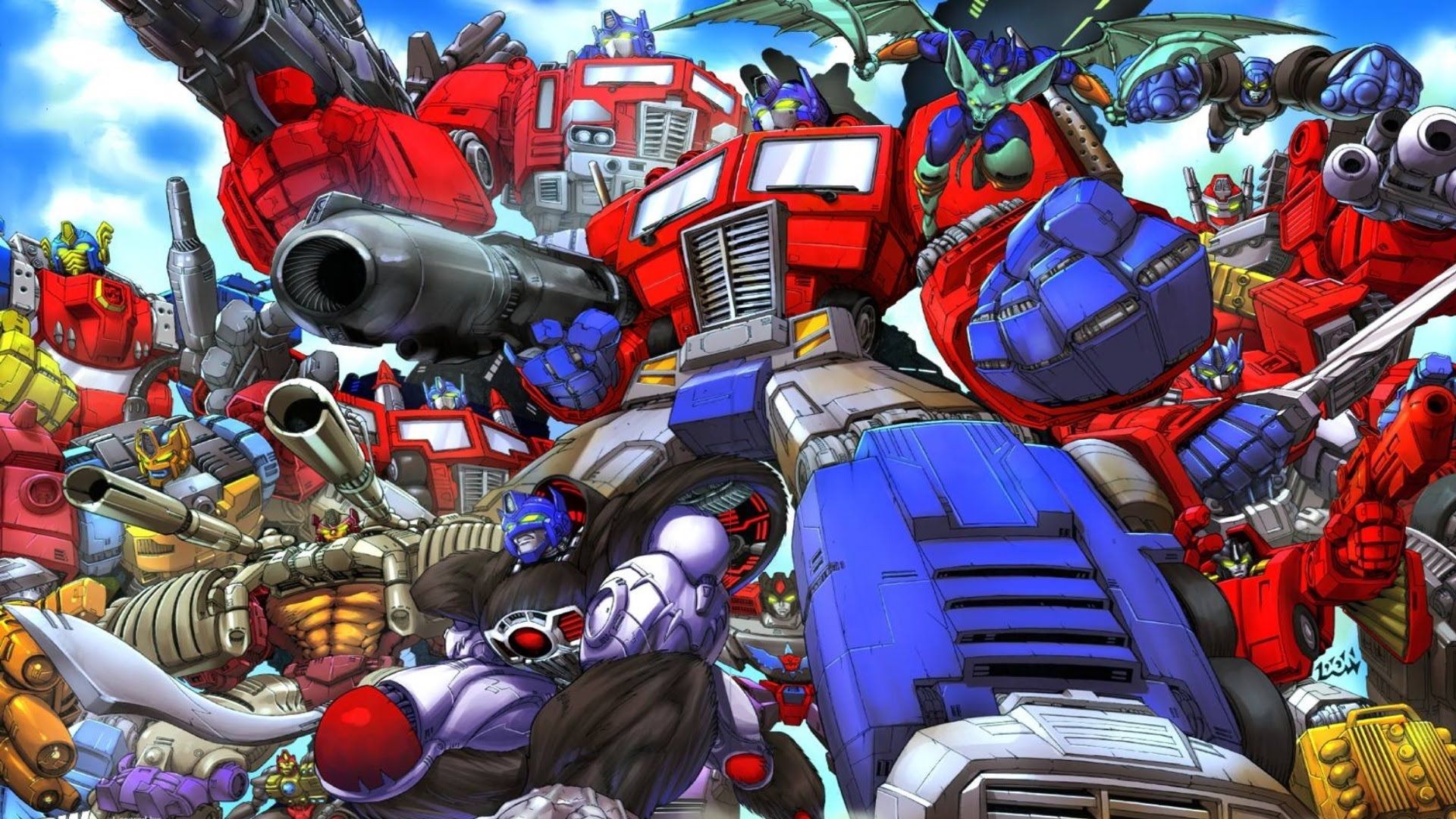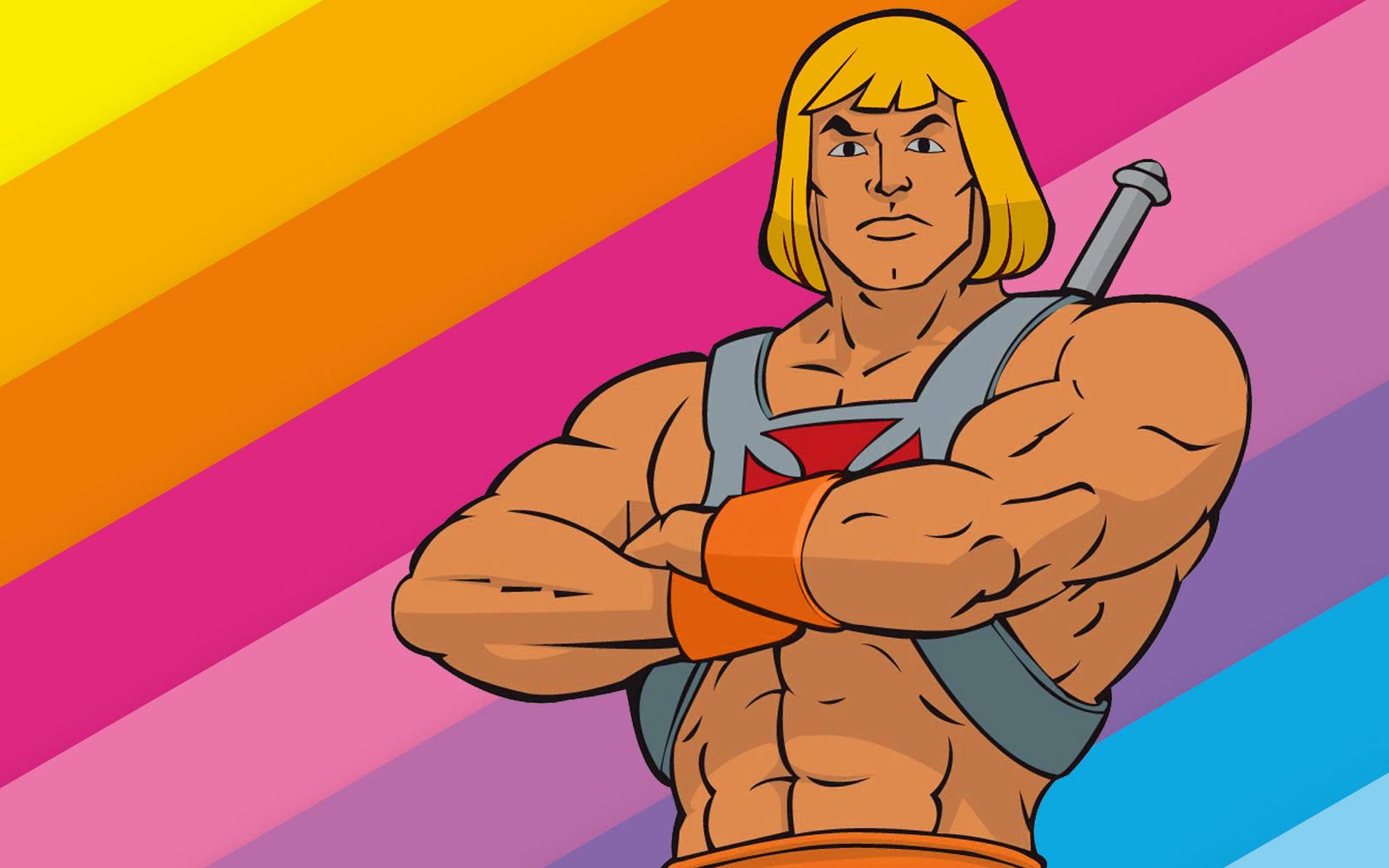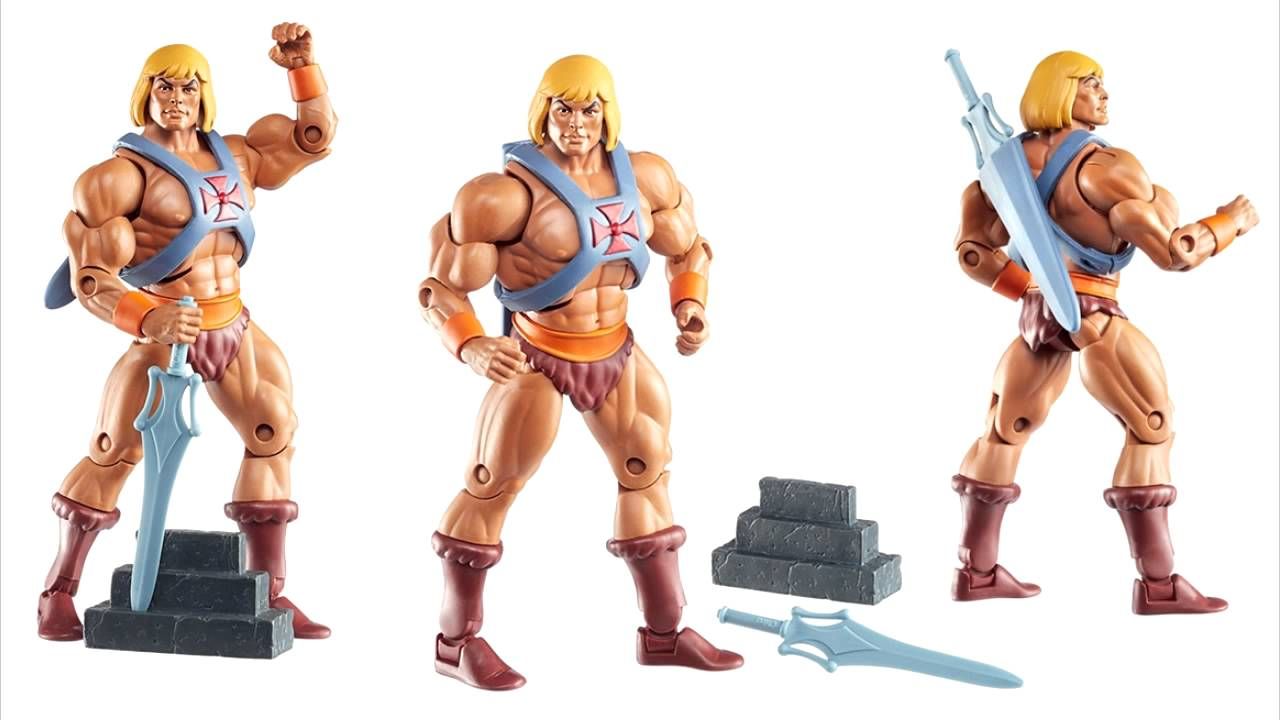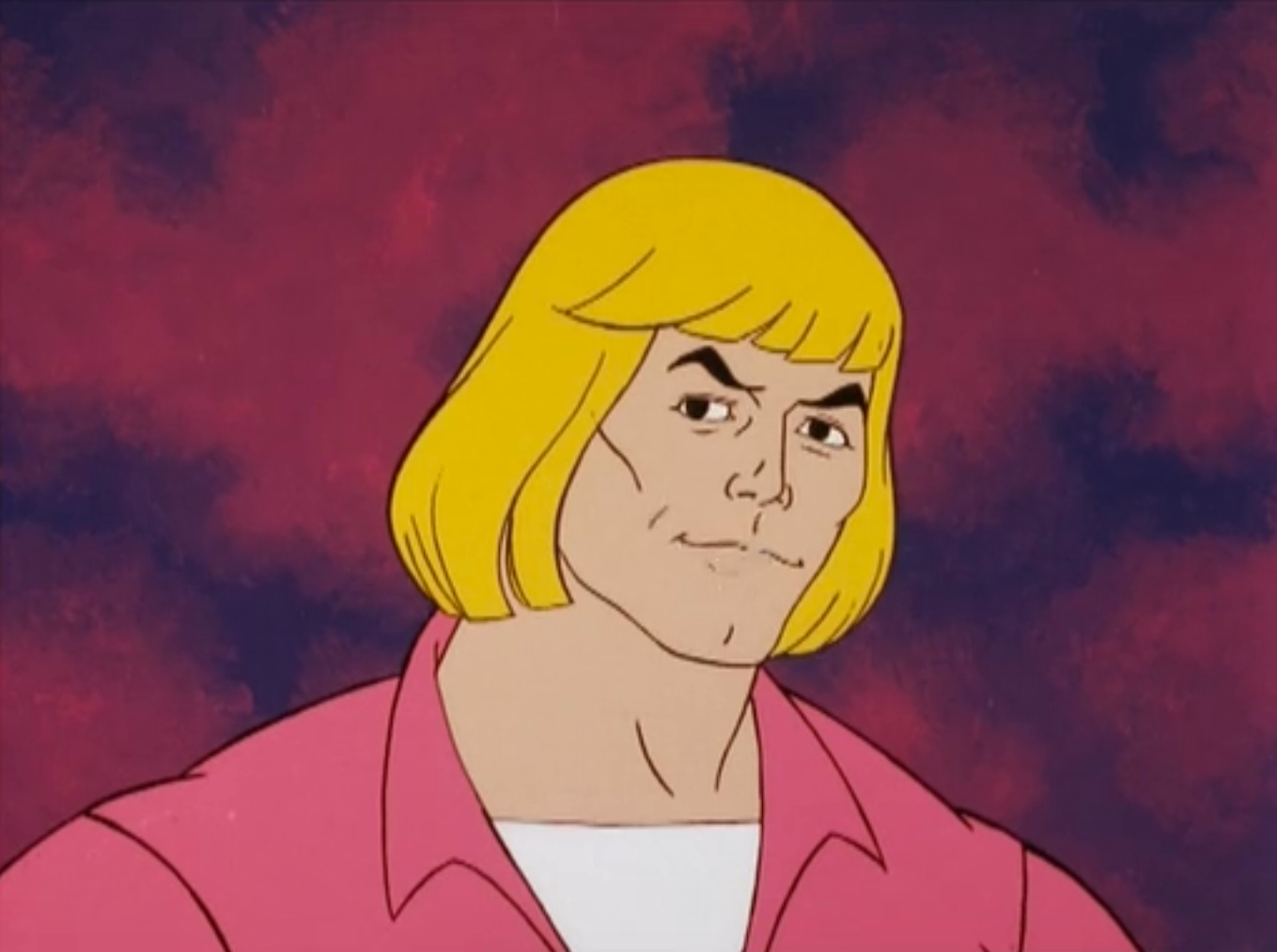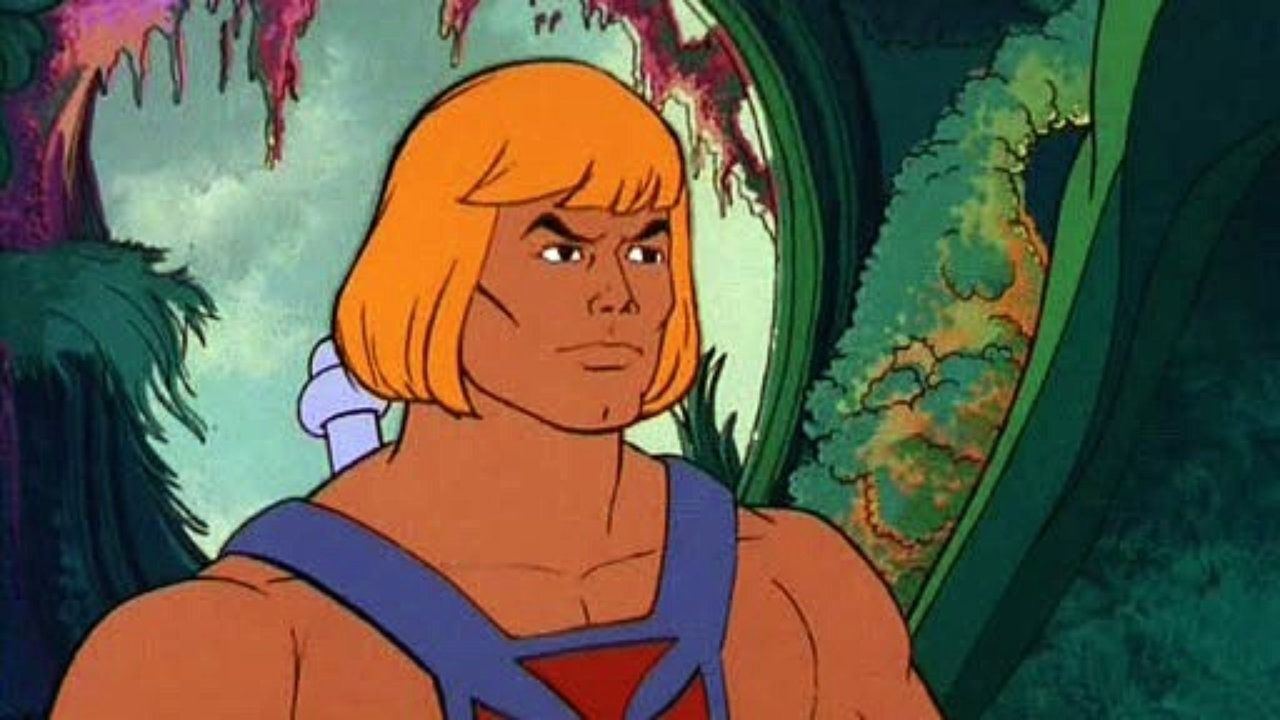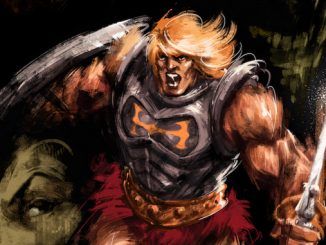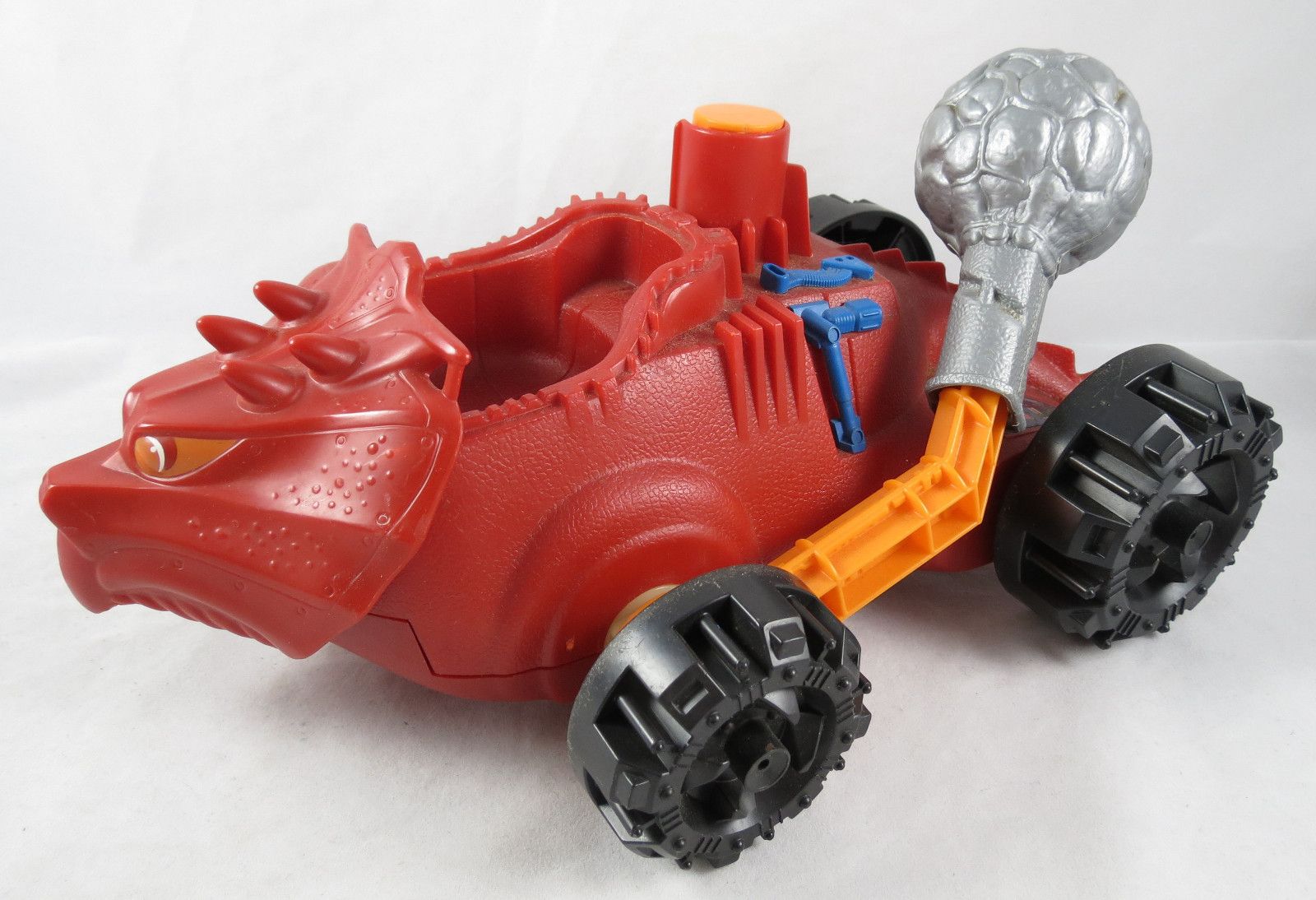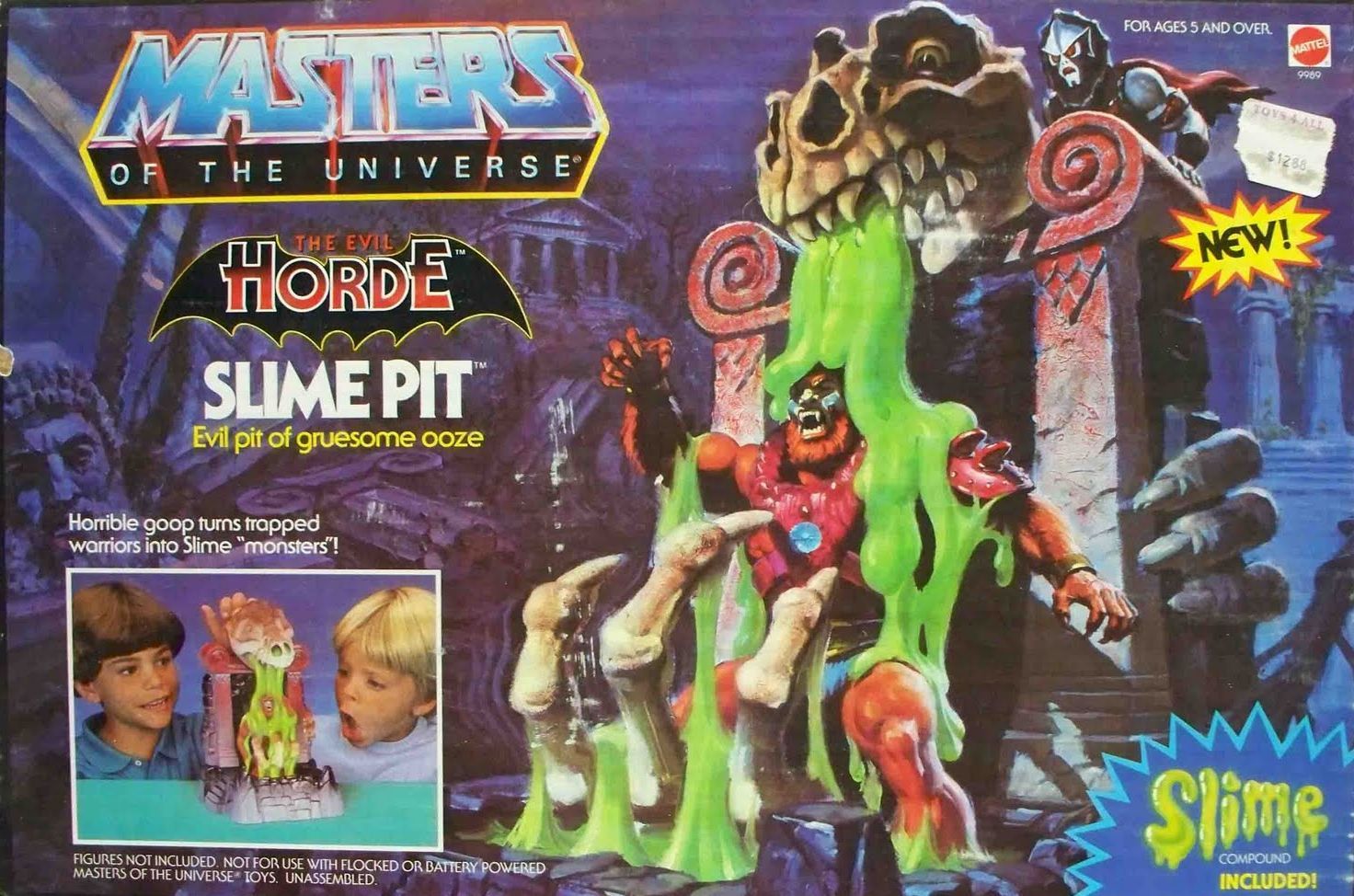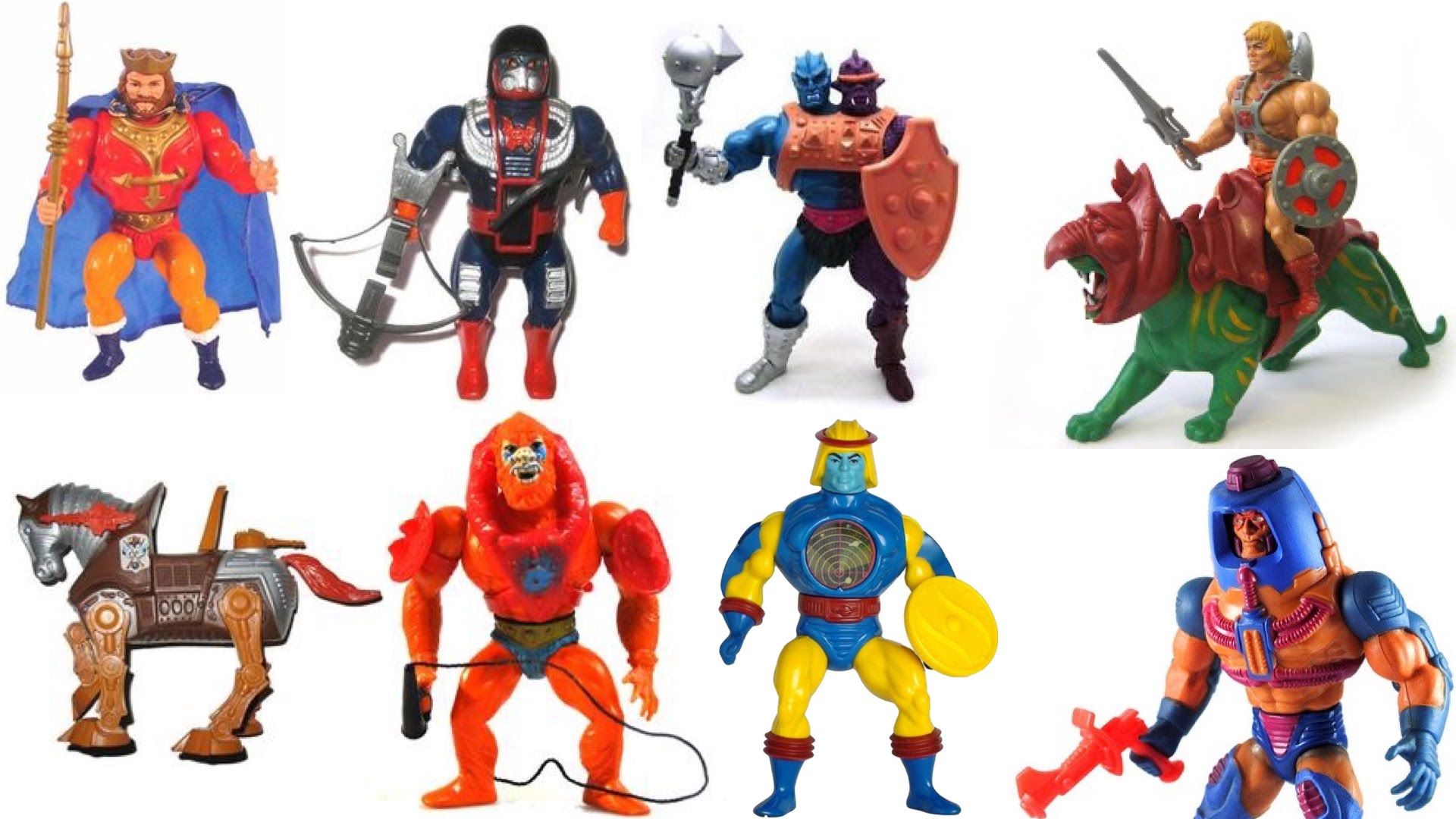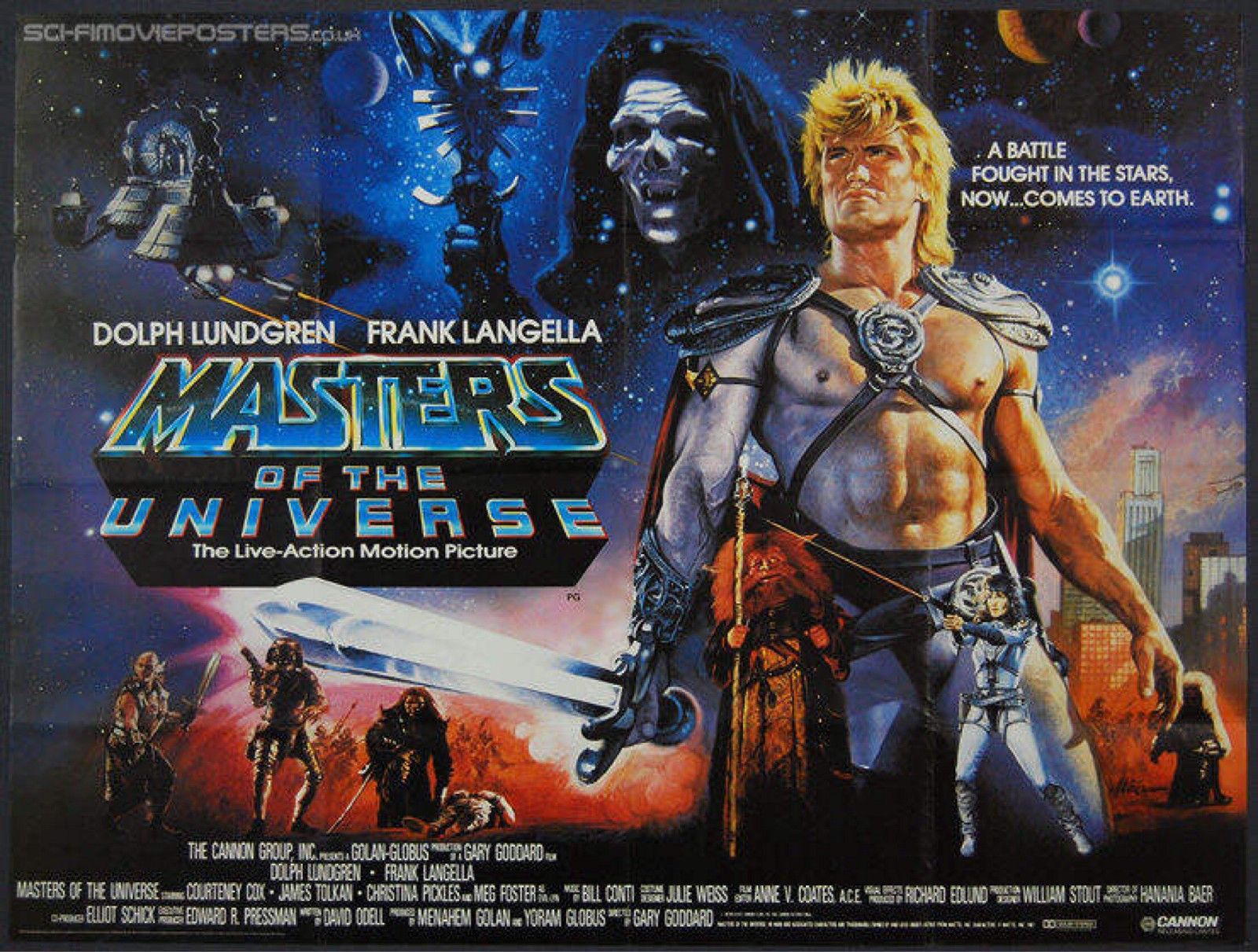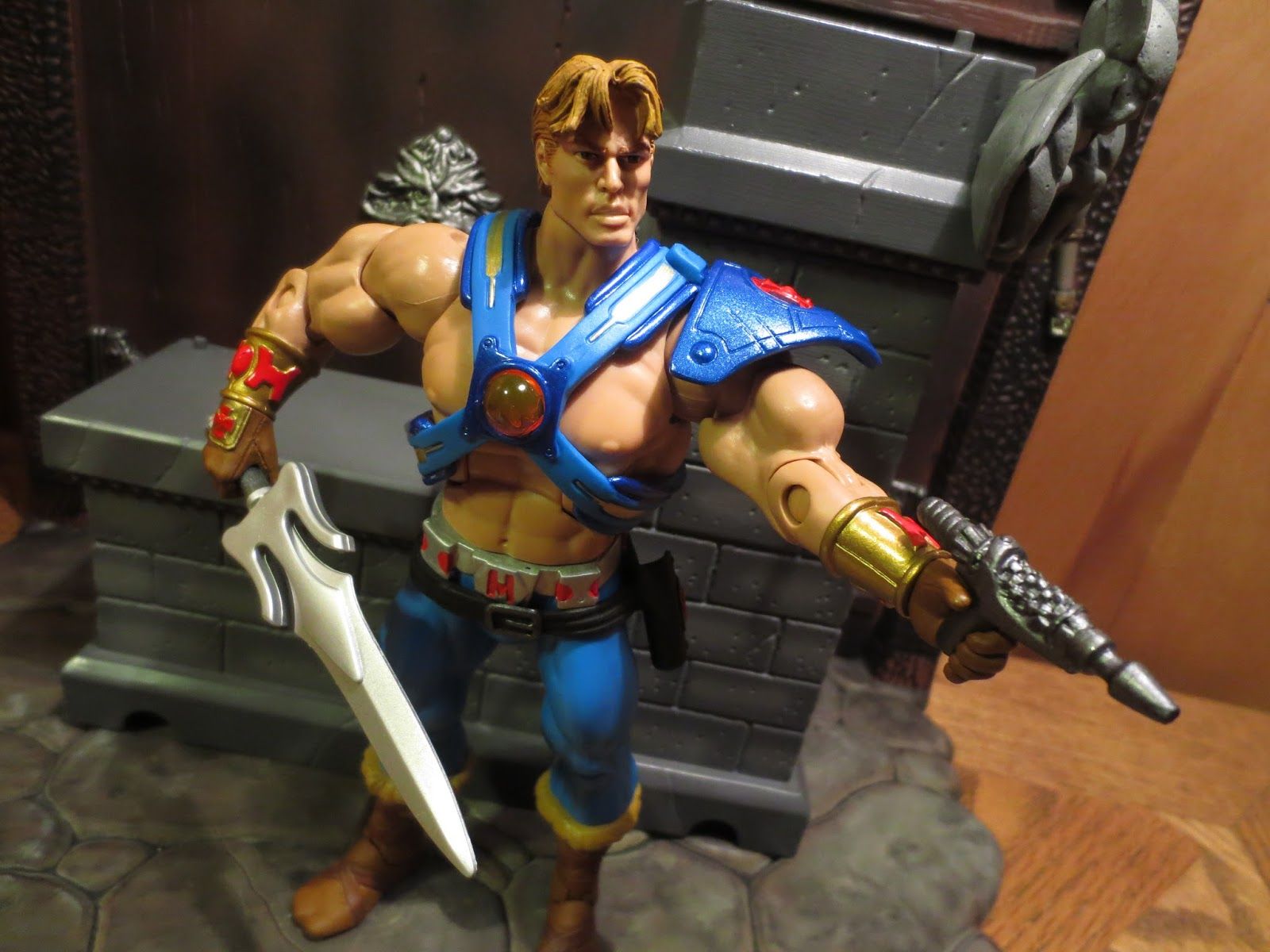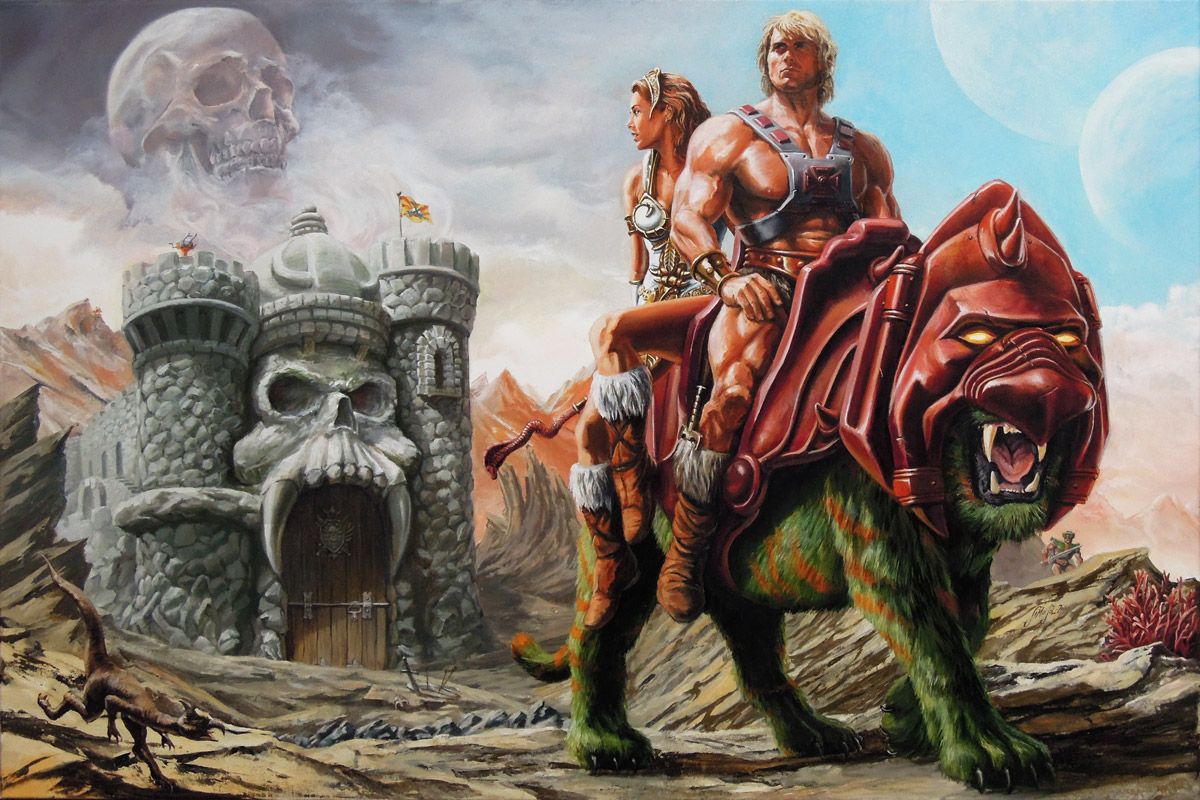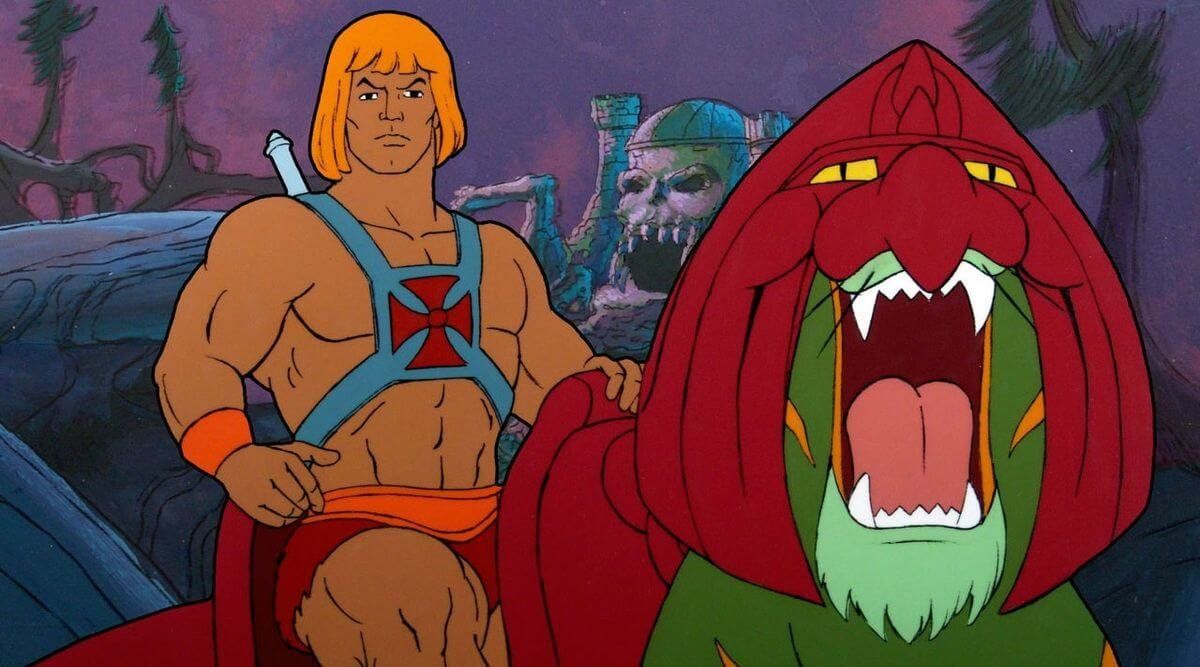He-Man is easily one of the most recognizable characters in cartoon history. Sporting a blonde bob, muscular frame, and known to utter the famous phrase, "By the power of Greyskull, I have the power," the likable hero was a pop culture icon of the 80s.
The He-Man and the Masters of the Universe action figures flew off the shelves as the animated television series garnered millions of viewers over two seasons before fading into obscurity. A live-action film adaption failed to live up to expectations but over the years He-Man has been brought back in various forms, from new action figures to a comic book series, proving the longevity of the 80s favorite.
Having been part of many people's childhood and lasting for over three decades, He-Man continues to be a part of modern pop culture. During that time, there have been many rumors about the character and his creation and secrets hidden from view. So we've dug deep and discovered 25 unsettling facts about He-Man for you to check out.
25 Star Wars Could Have Derailed He-Man
No matter your thoughts on George Lucas' there's no denying he's one smart cookie when it comes to marketing. Realizing how successful Star Wars was going to be, Lucas offered the rights to the characters to Mattel in 1976 but CEO Ray Wagner balked at the $750,000 upfront licensing fee Lucas demanded. Unfazed, Lucas continued to shop the rights around but after struggling to get a buyer decided to take a pay cut as a director to own the merchandising rights, proving a shrewd move that made him millions.
Realising they'd missed out on a massive payday, Mattel set to work trying to create a rival line of action figures.
Eventually, Mattel came up with the concept of He-Man and the Masters of the Universe. While never hitting the heights of Star Wars merchandise, for a few years in the 80s, He-Man was just as popular as Luke Skywalker and Co.
24 He-Man's Iconic Look Could Have Been Very Different
There was a lot of pressure on Mattel's design team to come up with a new action figure and lead designer Roger Sweet knew simplicity was the best way to go. According to his 2005 book, Mastering the Universe: He-Man and the Rise and Fall of a Billion-Dollar Idea, Sweet explained he understood if he gave the marketing department something they could sell he was well on his way to success.
Sweet used toy designer Mark Taylor's early sketches as inspiration for the He-Man character. Inspired by neanderthal man and Vikings, Sweet used the sketches to create three distinctly different figures. The three figures were a barbarian, spaceman, and solider, with the barbarian the pick of the bunch. And as for the name, Sweet revealed in his book, "I simply explained that this was a powerful figure that could be taken anywhere and dropped into any context because he had a generic name: He-Man!
23 He-Man Modelled On Big Jim
Having settled on basing He-Man on a barbarian character Mattel head designer Roger Sweet had to get a prototype made up to demonstrate the toy to CEO Ray Wagner. Not having enough time to start from scratch, Sweet used a Big Jim figure as a model for He-Man. Big Jim was a popular line of figures released by Mattel in the 70s that were very similar to Hasbro's G.I. Joe line of action figures. Sweet took the Big Jim figure, placed it in a battle pose, molded clay around it, and had plaster casts made to represent the warrior He-Man. Despite the crude design it worked and Wagner signed off on the creation of He-Man and a new children's favorite was born.
22 He-Man Could Have Been Conan
Conan the Barbarian was a fictional character created by the great writer Robert E. Howard in 1932. He wrote an array of stories about Conan's adventures during the lost Hyborian Age as he went from a thief to a great warrior before eventually becoming a king. In 1982, the first live-action film adaptation of Conan, Conan The Barbarian, was released starring newcomer Arnold Schwarzenegger as the titular title character.
The films were a moderate success but Mattel could see dollar signs in the property.
The toy company wanted to create a line of Conan action figures and began working out the kinks in a deal to construct three inch Schwarzenegger figures. But at the last minute, Mattel backed out of the deal when they realized Conan was a harmer a womanizer. Known for making family-friendly toys, Mattel couldn't be involved with a character known for his violent ways and the deal was scratched.
21 Mattel Sued For Conan Likeness
Having decided not to license the Conan property, Mattel went about creating their own action figure, eventually coming up with the concept for He-Man. Rumours began circling that Mattel had ripped off the Conan character for He-Man so Conan Properties International sued them for copyright infringement. Despite He-Man and the Masters of the Universe figures first hitting the shelves in 1982, the same year Conan The Barbarian was released, Mattel were able to provide enough information to show they had developed the line of action figures themselves without copying Conan. Mattel won the lawsuit and retained all the rights over He-Man and the Masters of the Universe.
20 He-Man The Animated Series A Bluff
Having settled on creating an action figure based on a barbarian the next hurdle for Mattel was finding someone to stock the product. To help sell the toys marketing director Mark Ellis reached out to DC Comics and got them to create a fake He-Man comic to help sell the idea of the toys. During a meeting with Toys 'R' Us, Ellis recalled in a 2013 interview one of the big bosses wasn't convinced the comic would work, telling Ellis that "five-year-olds don't read." Not one to back down Ellis replied, "Did I tell you about the two one-hour TV specials we are running?"
The only problem being there were no television specials planned.
Ellis quickly set to work finding a suitable company to help out with this, and after being turned down by Hanna Barbara got the green light from Filmation. The next step was getting syndication for the specials.
19 Everyone Turned Down The Animated Series
Having locked in stores to sell the toys and acquired Filmation to produce the He-Man animated series, all Mattel need was a network to televise the show. This proved to be much harder than expected, with the three big networks CBS, NCB, and ABC all turning down the show for an early morning Saturday slot. Undeterred, Filmation president Lou Scheimer proposed creating a 65-episode first season of He-Man that would run five days a week. In this way, networks could sell advertisement blocks during the show and create more cash. Entitled He-Man and the Masters of the Universe, the show launched in 1983 and lasted 130 episodes across two seasons. At the height of its popularity, He-Man was watched by over nine million people and was the first successful toy that had been turned into a television show.
18 He-Man Opened The Doors For Many Creatives
Despite only lasting two seasons He-Man and the Masters of the Universe was a smash hit that opened the doors for many talented people who went on to bigger and better things. Three of those people involved in the show who have gone on to have great careers were Paul Dini, Bruce Timm, and J. Michael Straczynski.
Dini and Timm are best known for working on the famed Batman: The Animated Series.
As well as collaborating on a number of projects together, the two have also had success elsewhere, with Dini working as a writer on the G.I. Joe and Transformers cartoons and Timm working as a character designer on She-Ra and being involved with The Real Ghostbusters. J. Michael Straczynski is the most well known of the three, having written a number of comics for DC (Superman, Wonder Woman) and Marvel (The Amazing Spider-Man, Thor) and been involved in the creation of many hit tv series (Babylon 5, Sense8) and films (Thor, World War Z).
17 But Who Really Created He-Man?
The success of He-Man surprised many, especially those involved at Mattel, and caused much angst amongst those involved as to who actually came up with the concept. Both designers Roger Sweet and Mark Taylor have laid claim to coming up with the initial idea for He-Man as they were responsible for the creation of the action figure toy line. There are others who helped bring the animated He-Man and the Masters of the Universe to life who believe they are the ones who made the property such a success. The Netflix series The Toys That Made Us includes an episode about He-Man and interviews many involved with the figures and series creation, with multiple people putting their hand up as the creator of He-Man. Let's just be thankful someone came up with the blonde bombshell.
16 Toy Line Struggled From Lack Of He-Man Figures
At it's height, He-Man and the Masters of the Universe was one of the most successful releases Mattel ever had, raking in millions of dollars through toy sales. Kids couldn't get enough of the action figures and Mattel knew they had a hit on their hands and began creating new characters to cash in on the success.
This is all well and good but in focusing on new figures, Mattel forgot about their original designs.
They invested so much time and money in new characters and accessories they forgot to keep producing new versions of He-Man and Skeletor, the two biggest sellers. Kids really wanted to play with the two main characters but had to settle for lesser known figures like Megator and Standor. This lack of availablity of the main figures was one of the major reasons behind the demise of He-Man in 1987.
15 Prince Adam Didn't Exist At First
When fans were first introduced to He-Man it was as the muscle bound warrior fighting to keep the peace in Eternia. It wasn't until DC comics introduced Prince Adam in the He-Man comic From Eternia - With [Demise]! that He-Man's alter ego appeared. Filmation decided to incorporate Prince Adam into He-Man and the Masters of the Universe, explaining Prince Adam was half-Eternian and half-Terran. Prince Adam was portrayed as an aloof coward who always disappeared when danger was at hand, but as we all know, this was only because he would transform into He-Man to combat Skeletor and his evil henchmen. Having an alter ego gave greater depth to He-Man and made him a more three dimensional character. Much more appealing that a long haired guy with a sword hacking at people as the original concept would have been.
14 He-Man Figure Almost Had Real Hair
As the hero of Eternia He-Man was a brave and fearless warrior who'd do anything to protect his kingdom, but you'd think he might have got himself a better haircut. He-Man's blonde bob is a horrible look but something that helped define the character during his 80s reign.
It's hard to believe but He-Man could have had worse hair if the original plans for his figure went ahead.
The first drafts of He-Man had him sporting long hair and wearing a helmet. When it was time to start producing the figures, someone at Mattel had the genius idea of giving He-Man "real" hair like Barbie. It turned out using life-like hair was expensive so level heads prevailed and He-Man was given his iconic blonde bob do instead.
13 He-Man Cancellation Almost Caused An Issue
Texas television station KTXS-TV found out the hard way not to deprive children of what they want when they took He-Man off the air in 1985 due to a drop in ratings. Fans immediately complained to the station so they resumed airing the show and organized an appearance by a Mattel endorsed He-Man actor to keep the kids happy. But the meet-and-greet got out of hand when around 8,000 kids showed up at the station to meet He-Man. Chaos ensued as the kids went bonkers waiting in line to see He-Man and the event had to be cancelled. “He-Man left early because we became very concerned about [the children],” KTXS owner S.M. Moore told the Lethbridge Herald.
12 The Ball Buster Isn't A Great Name For A Kids Toy
Along with the He-Man figures, a host of different accessories and vehicles were created to expand the toy line. The Battle Ram and Attack Tark were two of the most popular, as was the Bashasaurus, although if they went with its original name, things might not have worked out so well. The Bashasaurus had a massive swinging ball attached to it that was used to clear a path and take out enemies. When it was presented to Filmation president Lou Scheimer it went by the name the Ball Buster.
It took Scheimer less than five seconds to tell them to change the name.
There was no way he was going to have a vehicle with that name on his show. Thankfully everyone involved listened and the Ball Buster became the Bashasaurus and went on to be one of the most successful He-Man creations.
11 Parent's Hated The Slime Pit
Despite never appearing in the show, the Slime Pit was one of the most popular He-Man toy products. The chamber was a mind-control contraption owned by Hordak, with anyone doused in the green slime from the bizarre contraption turned into a mindless servant of Hordak. The toy came with disgusting green ooze that kids could splash over their He-Man action figures. Unfortunately, kids often used the slime outside of the chamber and it was known to stain clothes and be very messy to clean up. While that's enough to put most parents over the edge, there's also the fact the slime would run out and parents would be forced to buy more. The only way to do this was by buying more figures who came with additional slime. Clever marketing on Mattel's part but not great for parent's and their wallets.
10 Toy Sales Hit An All Time Low In 1987
Nobody at Mattel expected He-Man to sell so well, so when the product became a smash hit across the world they went all in. They increased production of figures and introduced dozens of new toys over a short space of time with Mattel making close to a whopping $400 million dollars in 1986.
But it all came to an end in 1987 with the company only making a paltry $7 million.
That's an unbelievable decrease of of 98%! That was the end of He-Man as a profitable creation and the toy line was soon no more. It's hard to put a finger on why sales dropped off so much but many believe it was due to the 1987 financial crisis and the success of new toys you might have heard of called Transformers and Teenage Mutant Ninja Turtles.
9 Film Spin-Off Masters Of The Universe Bombed
The same year He-Man hit the skids, a live action film based on the figures was released. Starring Dolph Lundgren as He-Man, the film was a critical and commercial failure. It was an ultra-violent take on the mythology of He-Man and was predominately set on Earth, something many fans didn't agree with. Over the years, it's become something of a cult classic but Lundgren doesn't have fond memories of filming. In various interviews, he has stated he didn't enjoy filming Master Of The Universe despite the film being his first lead role in Hollywood. Lundgren's Swedish accent was so hard to decipher he had to dub his lines again. It took three goes before director Gary Goddard was happy with the results, although it didn't help the film upon release.
8 Almost A Spin-Off About He-Man's Son
She-Ra: Princess Of Power was a successful spin-off of He-Man and almost led to the another spin-off, this time featuring He-Man's adopted son. The show was to be called He-Ro Son of He-Man and the Masters of the Universe. While the name is something left to be desired, the show would have been an interesting addition to the franchise.
Lou Scheimer came up with the idea in the 90s long after He-Man had been a commercial success.
He pitched his idea of He-Ro to DIC Entertainment in 1996. The show would have followed the original Master of the Universe with Prince Adam finally taking the throne to become King Adam. He and Queen Tee-La would adopt a boy named Dare who had the power to become He-Ro. The show would have followed his adventures similar to that of the original show. Although He-Man and the Masters of the Universe has been revived twice, thankfully, they stayed away from this idea.
7 Power And The Honor Foundation
Some people really like He-Man, like those responsible for the Power And The Honor Foundation. Set up in 2010, the foundation is dedicated to preserving the work of all the artists involved in the He-Man franchise. From artists to designers to writers, the Power And The Honor Foundation includes scans of original documents and art work and is stored on the site for safe keeping. The mission statement of the foundation is, "To collect, archive, preserve, and educate the public about the creative origins of He-Man and the Masters of the Universe and She-Ra Princess of Power."
There's quite a lot of work gone into the webiste and although there hasn't been an new post since 2016, there is a wealth of knowledge to digest for dedicated fans. What's more, the foundation is recognized as a charity so you can make a tax-deductible donation if you wish.
6 Duplicate Footage Used To Cut Costs
Watching re-runs of He-Man and the Masters of the Universe today it's hard to see what the big deal was. The show had some tedious and nonsensical storylines and the animation was quite basic, but when watching as a child there was something magic about He-Man. Watching as a grown-up, it's plain to see Filmation cut corners to keep production costs down.
Many of the same shots of characters and certain action sequences are re-used in countless episodes.
Not only did they re-use footage but the creators changed the name of Gorpo to Orko stay under budget. The reason; by using Orko they could put a large O on his chest and therefore could flip the animation, meaning they had two Orko's for the price of one. This was just one of the many clever tricks Filmation used to keep costs down and maximize profits.

